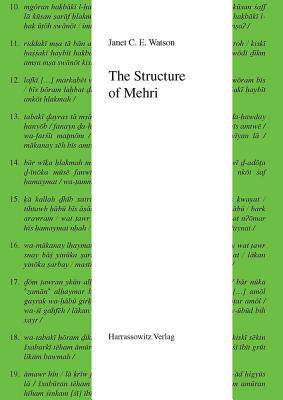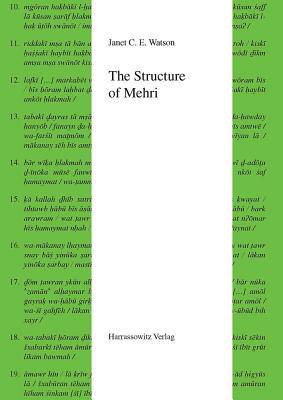
- Afhalen na 1 uur in een winkel met voorraad
- Gratis thuislevering in België vanaf € 30
- Ruim aanbod met 7 miljoen producten
- Afhalen na 1 uur in een winkel met voorraad
- Gratis thuislevering in België vanaf € 30
- Ruim aanbod met 7 miljoen producten
Zoeken
Omschrijving
Mehri is the most widely spoken of the six Modern South Arabian languages, with populations in eastern Yemen, western Oman, the southern fringes of Saudi Arabia, and parts of the Gulf. The Structure of Mehri is a comprehensive linguistic description of two major Mehri dialect groups: Mahriyot, the eastern Yemeni dialect of Mehri spoken in ?awf, and Mehreyyet, the Mehri of the Omani Najd. It provides the first description of Mahriyot, complementing Wagner (1953), which examines Mehriyet, the western Yemeni dialect of Mehri, and extending Rubin (2010), which deals with Mehreyyet. Based on fieldwork conducted by the author and material in Sima (2009) this is one of the first studies of any non-state language to include data from new technology (SMS and e-mail). Considering also other Modern South Arabian languages where relevant, phonology, morphology and syntax of Mahriyot and Mehreyyet is analysed and compared. Within syntax, particular attention is paid to phrase structure, clause structure, coordination, negation and supplementation. Furthermore, the final chapter provides a selection of the transcribed, translated and annotated oral texts used in the book.
Specificaties
Betrokkenen
- Auteur(s):
- Uitgeverij:
Inhoud
- Aantal bladzijden:
- 479
- Taal:
- Engels
Eigenschappen
- Productcode (EAN):
- 9783447067362
- Verschijningsdatum:
- 1/08/2012
- Uitvoering:
- Hardcover
- Formaat:
- Genaaid
- Afmetingen:
- 178 mm x 244 mm
- Gewicht:
- 1065 g

Alleen bij Standaard Boekhandel
+ 556 punten op je klantenkaart van Standaard Boekhandel
Beoordelingen
We publiceren alleen reviews die voldoen aan de voorwaarden voor reviews. Bekijk onze voorwaarden voor reviews.








